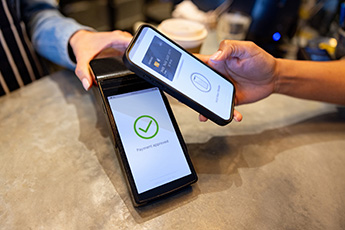Did you hear about the robot that got fired? A grocery store in Scotland was using a customized robot called Pepper, to entertain shoppers and provide helpful information. Pepper was canned because he apparently was also often confusing to customers and even seemed to make some customers uncomfortable. Interestingly, this same robot is doing well in Japan and has been testing in some US markets since 2016. This situation shows that new technology may be accepted in some areas while not in others, which is worth remembering with digital banking features.
Going digital seems to be the motto in banking these days. Although most community banks don't jump in with both feet when it comes to new technologies, Bain & Co research shows that you may want to pay particular attention to your customer needs as you enhance or implement digital solutions.
Unlike "self-serve" leaders in the Netherlands, Poland and Australia, most banks in the US are still heavily reliant on people to perform basic banking functions. The study found 40% of US respondents went to the branch at least once in the past quarter to make a deposit. This compares with 21% using digital channels and 18% using ATMs. Clearly, the human element is still important to US bank customers.
We still think personal relationships are an important part of community banking. At the same time, some customers are demanding stronger interactions with digital technologies. That means community banks must consider the best way to augment people offerings with digital ones.
The study offers some guidance that may help:
Be methodical with digital applications: If you have not already implemented a digital platform for customers, you can still reach them effectively, if you provide digital services in the areas they expect and want. According to Bain's research, most bank customers, regardless of age, prefer digital channels for routine banking transactions (such as account inquiries and bill pay). By using technology to improve those activities, and providing high value human interaction in other key areas (such as disputes or more complicated sales), banks can provide a decent balance. Customers get more of what they want, while banks get cost savings and data capture. Routine transactions serviced by bank staff can cost 20x as much as using digital solutions.
Use digital to cross-sell: Bain's research finds 42% of bank customers who bought products from competitors said they received an offer or saw an advertisement that prompted their defection. We know community banks are reaching out to customers in every way possible, but this serves as a reminder that frequency matters too. By layering in digital solutions, there are likely additional ways to target and communicate with your customers as you ramp up frequency. The research found more than 50% stated that they would have purchased the same product from their primary bank, if it had made the offer first.
Wait and see: Not every shiny new technology takes off. Online chat and videoconferencing use has decreased over the past 2Ys despite many banks having those technologies available. On the other hand, voice assistance technology seems to be picking up steam. Bain's research shows that 25% of US respondents use Siri, Alexa or Google Assistant on their smartphones and 27% were open to using this technology for banking in the future.
No matter how much or how fast you embrace technology, know that it changes over time so monitoring adoption rates and how new innovations are used by customers can help you stay on track with the right technologies for your customers.




